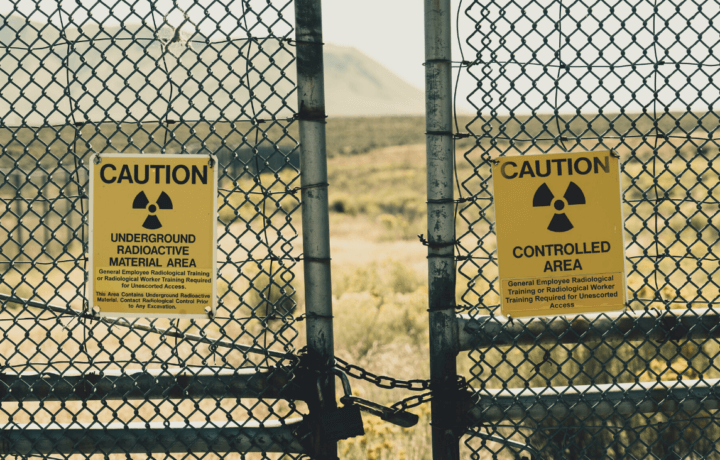Sixty years ago this month, the world was on the edge of nuclear war precipitated by the Cuban Missile Crisis. Since the crisis, the threat of nuclear weapons has become commonplace by several nations, with Russia saber rattling being among the most insistent. This past spring, Russian President Vladimir Putin broadcast warnings of possible nuclear weapons usage to deter the North Atlantic Treaty Organization (NATO) or U.S. military involvement in the Ukrainian War.
Russia is Allegedly Not Bluffing about nuclear weapons
As Russia endures significant military losses against Ukraine, Putin is making more threats of nuclear weapon use to deter outside intervention and potentially shift Russian momentum in the Ukrainian War. Late last month, Putin announced an increased mobilization of Russian military forces stating, “When the territorial integrity of our country is threatened, we will certainly use all the means at our disposal to protect Russia and our people. This is not a bluff.”
In an apparent effort to deter further repatriation of Russian occupied Ukrainian, a quick “sham” vote was held in captured territories of the Ukraine. This put Russia in a position to try and annex occupied Ukraine. The results were widely ridiculed, with the entire episode being characterized as a land grab by Russian leaders after numerous embarrassing military losses during the conflict.
The underlying premise was that Russia would claim the new territories as its own and use Ukrainian military occupation as an excuse for nuclear weapons usage. Opinions vary greatly on how the situation will play out. Many strategists believe that Putin is once again bluffing. Others do not. Some say that tactical nuclear weapons, not strategic would be used. But this rhetoric only leads to more questions. Would tactical nukes lead to strategic nukes? How would the west retaliate?
Tactical Versus Strategic Nukes
Former commander of the UK & NATO Chemical, Biological, Radiological and Nuclear (CBRN) Forces, Hamish De Bretton-Gordon, recently explained his view of the crucial differences between “tactical” and “strategic” weapons and why all-out nuclear war probably isn’t on the cards anytime soon. He stated Russia and the West have an estimated 6,000 strategic warheads each, which if used would cause Mutually Assured Destruction or aptly acronym MAD. Due to MAD, most analysts believe that only tactical nuclear weapons would be used.
According to De Bretton-Gordon, tactical nuclear weapons are much smaller warheads with a yield, or explosive power, of up to 100 kilotons of dynamite or roughly 10% of strategic warheads. By comparison the Hiroshima bomb, “Little Boy”, is estimated to have been around 18 kilotons of TNT and the Nagasaki bomb, “Fat Man”, 23 kilotons. In other words, smaller tactical nuclear weapons are 4-5 times the power of Hiroshima and Nagasaki.
With fewer choices on the battlefield after Ukrainian successes and no indication of backing down, Moscow has a dilemma. Therefore, analysts are studying how tactical nuclear weapons would be employed during the current conflict. Most believe Putin has a several options on deployment of tactical weapons. As a show of force, he could conduct tests at sea to try and force concessions from Ukraine and the west. Should he use a tactical nuke inside Ukraine, analysts believe he would instantly become a global villain, potentially changing the current course of Chinese and India relations.
Threat Analysis for the U.S.
The U.S. government has indicated the higher threat is based primarily on Putin’s rhetoric and current mindset with Russian losses in Ukraine, rather than hard intelligence data. Even though strategic weapons could be launched at a moment’s notice, there is no indication that Russia is moving tactical nuke weaponry into place.
Over the weekend, when asked about nuclear weapons use by Russia, Retired Army general and former CIA chief David Petraeus said the U.S. and NATO might “take out every Russian conventional force that we can see and identify on the battlefield” in Crimea, Ukraine, and the Black Sea. He also stated that nuclear weapons usage “cannot go unanswered. But it doesn’t expand — it’s not nuclear for nuclear. You don’t want to get into a nuclear escalation here.”
Former U.S. Secretary of Defense Jim Mattis believes there is no distinction of the words tactical and strategic. Both classes of weapons represent a line in the sand that has not been crossed or experienced since 1945.
U.S. officials continue to emphasize that this is not the first nuclear weapons threats from Putin this year during the Ukraine War. Last week, Secretary of State Antony Blinken said Russia’s “reckless nuclear threats must stop immediately,” with President Biden, stating the U.S. reaction would be “consequential,” based “on the extent of what they do.”




